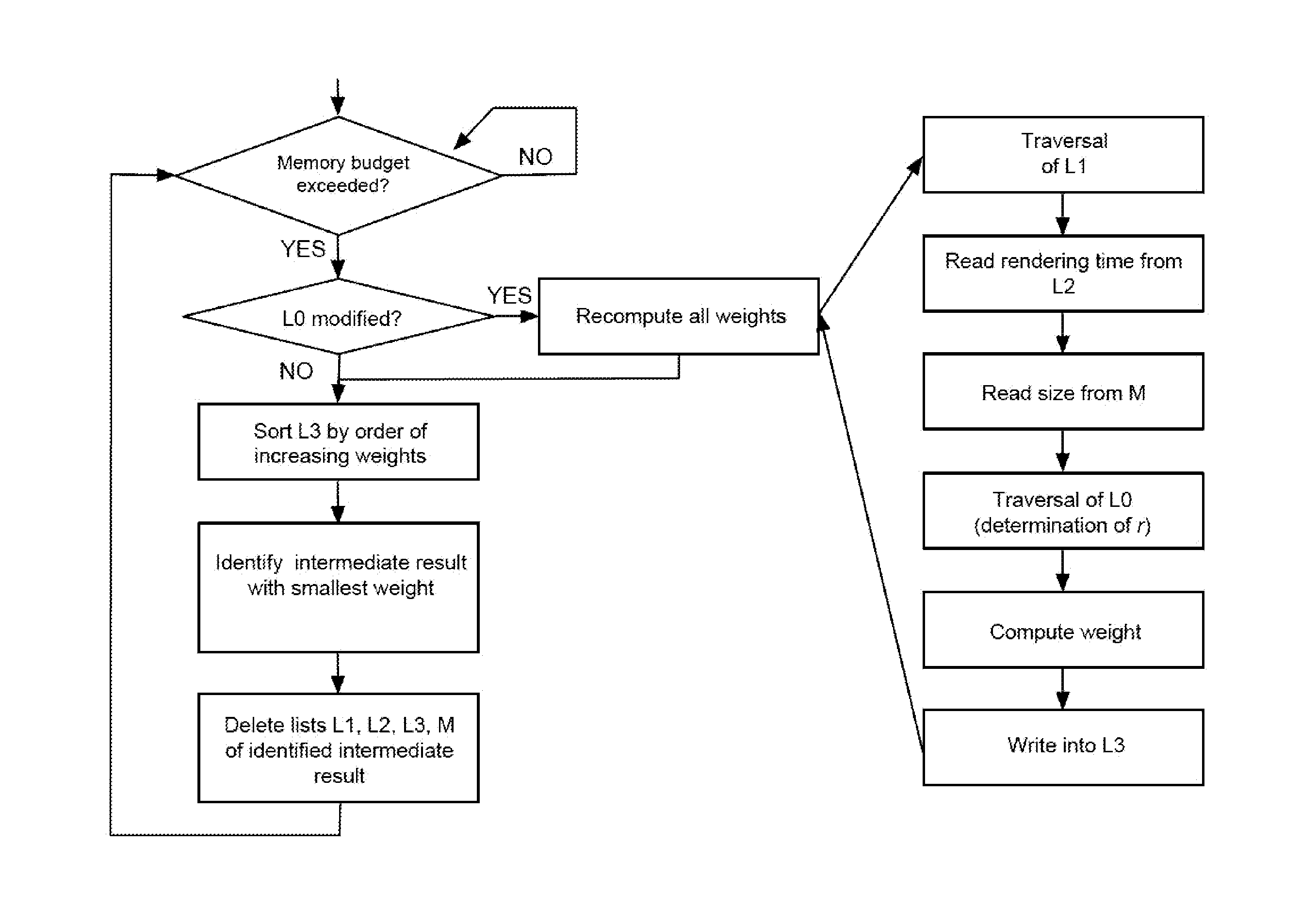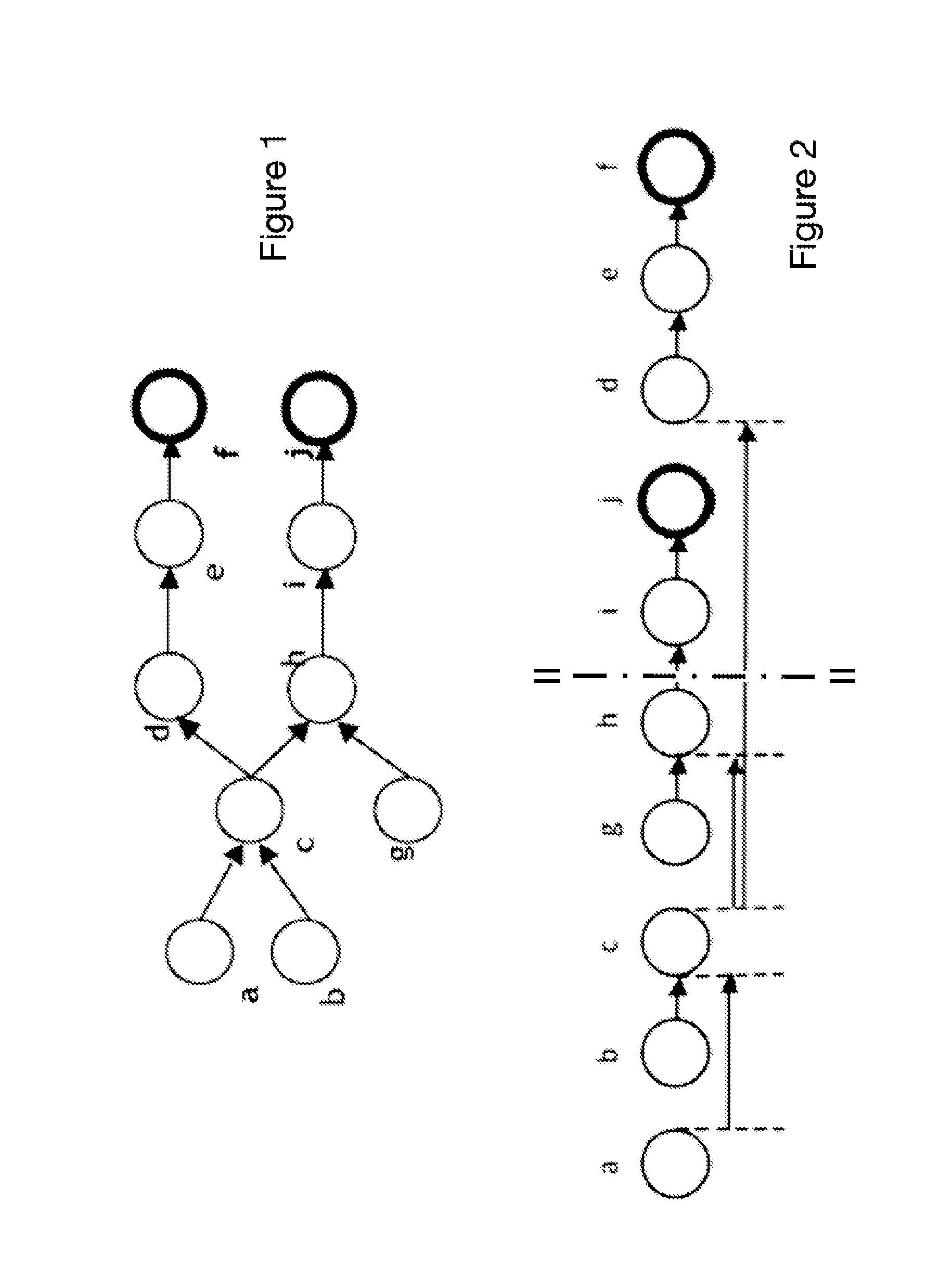Device and method for generating procedural images with a cache
a procedural image and cache technology, applied in the field of image generation engines, can solve the problems of large memory space, frozen resolution, and large number of computations, and achieve the effect of reducing the number of computations
- Summary
- Abstract
- Description
- Claims
- Application Information
AI Technical Summary
Benefits of technology
Problems solved by technology
Method used
Image
Examples
Embodiment Construction
[0054]An example of a generation graph is shown in FIG. 1. Nodes [a, b, c, d, e, g, h, i] generate intermediate results while nodes [f, j] are the computations generating the image results desired by the user. To obtain the result images, all other nodes must be traversed in the order defined by the orientation of the edges of the graph. Since a node can not be computed until all its inputs are available, two independent sub-branches can be evaluated in parallel but must be synchronized when they join a node.
[0055]Each computation is performed in a time of its own, depending on its complexity and the amount of data to be processed. Each node generates an image that requires a certain amount of memory for said image to be saved. This amount of memory is dependent on the size of the image and is specific to each node. For example, for a given node, processing an image B twice as high and wide as an image A will result in four times as much data to be processed and therefore, potential...
PUM
 Login to View More
Login to View More Abstract
Description
Claims
Application Information
 Login to View More
Login to View More - R&D
- Intellectual Property
- Life Sciences
- Materials
- Tech Scout
- Unparalleled Data Quality
- Higher Quality Content
- 60% Fewer Hallucinations
Browse by: Latest US Patents, China's latest patents, Technical Efficacy Thesaurus, Application Domain, Technology Topic, Popular Technical Reports.
© 2025 PatSnap. All rights reserved.Legal|Privacy policy|Modern Slavery Act Transparency Statement|Sitemap|About US| Contact US: help@patsnap.com



